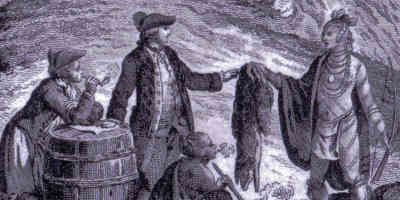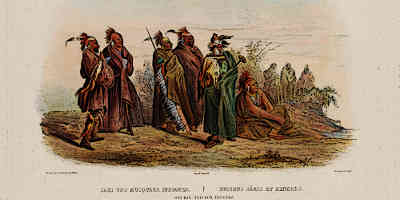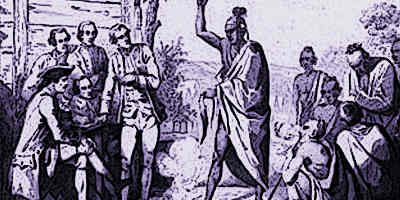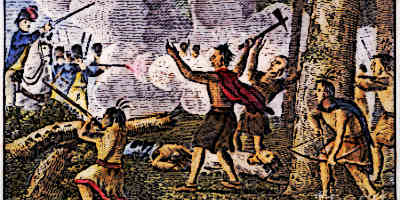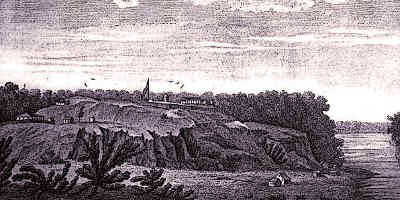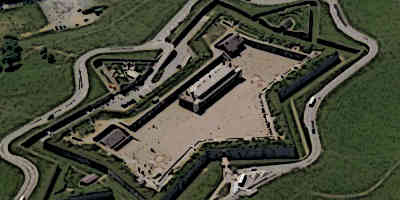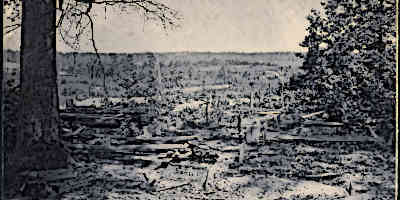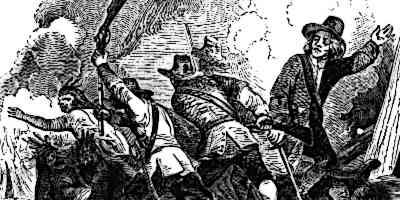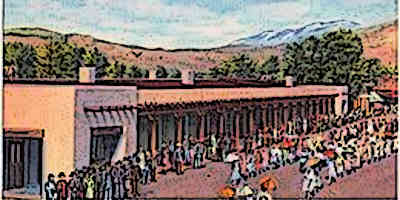Beaver Wars
The Beavers Wars were a number of wars fought in the Great Lakes and St. Lawrence River Valley
Fox Wars 1712
Fox Wars fought in the present-day Wisconsin and Michigan, took place from 1712 to 1733
French and Indian War 1754
Some Native American tribes fought on the side of Britain in the French and Indian War
Great Yamasee War of 1715
The Yamasee War was fought in the modern-day South Carolina state in 1715
Natchez Rebellion
The Natchez Rebellion, also known as Natchez Revolt - Native American Natchez people against French colonists
Northeast Coast Campaign
Northeast Coast Campaign was a war campaign launched by a confederation of Native American tribes
Peach Tree War 1655
The Peach Tree War was launched by the Native American Susquehannock Nation against Dutch colonists
Pequot War 1638
Not only the Native Indians tribe, but the British colonists also wanted to control the Connecticut River Valley region
Powhatan Uprising 1622
A large number of Powhatan warriors launched a surprise attack on Jamestown
Pueblo Revolt 1680
Pueblo Revolt took place in the 17th century in the present-day New Mexico
Following are some of the most notable wars fought by the Native Americans against European colonists, settlers and later, the United States.
American Revolutionary War
Although this war was mainly fought between the American colonies and Britain, the Native Americans were deeply affected by it. They also participated in it, with most Native American tribes siding with Britain.
When Britain lost the war, it gave up many of its proclaimed territories. These included the lands of many Native American tribes as well. The tribes lost their ancestral lands and most of their freedoms.
Northwest Indian War
During the 18th century, USA started expanding towards the west. As the country expanded and included more territories, these new lands were settled by American settlers.
In 1787, the Northwest was opened for the settlement of Americans as it had already become an official part of USA. When white settlers started arriving, the Shawnee, Miami and Ottawa tribes in the region resisted.
U.S. government sent an army which was defeated by the Native American tribes. Another army then arrived which decisively ended Indian resistance in 1794. The next year, the Native Americans signed a peace treaty and gave up most of their territories.
Black Hawk War
The Black Hawk War was fought by a small alliance of Native Americans under the leadership of a Sauk war chief named Black Hawk.
The Sauk tribe lived in the area of Illinois and Iowa. But then the U.S. government was able to purchase their lands through a disputed treaty. This angered the Sauk. When U.S. government came to take possession of the land, a group of Native Americans known as ‘British Band’ fought back.
They defeated the militia forces at a battle and then continued hit-and-run raids. The conflict started in April 1832.
Within the next few months, more forces from the U.S. government arrived and by August, 1832, the warriors under Black Hawk had been mostly killed or captured. Black Hawk finally surrendered and was imprisoned for a year.
Apache Wars
The Apache Wars were fought between Apache tribes and the United States in the American southwest. These wars began around 1850 and continued all the way into the 20th century. Important Indian leaders who fought in this war included Geronimo.
Second Seminole War
The Second Seminole War took place in Florida from 1835 to 1842. In this war, many groups of Native Americans fought against the United States.
The U.S. government wanted to relocate the Seminole Indians from Florida to other territories. The Seminole resisted this and united under Osceola to fight back. They were able to ambush American militia groups, forts and supply trains.
They also achieved considerable success in many attacks. This war proved to be one of the most costly Indian wars for the United States.
After years of fighting, the U.S. forces were able to defeat the Seminoles in a number of battles. After their defeat, the Seminole were forcibly removed from their settlement in Florida.
Red Cloud’s War
In the early 1860s, white settlers from the American states started traveling on the Bozeman Trail to go west. This trail went through the territories of the Lakota, Cheyenne and Arapaho tribes.
The white settlers who traveled on the trail exploited the natural resources along the trail. This angered the Native American tribes who attacked the civilians and the forts of the U.S. army in the Powder River country.
This initiated the war which came to be known as the Red Cloud’s War. The Native Americans were led by a chief of the Lakota tribe named Red Cloud. At the end of the war, the alliance of Native American tribes was victorious.
Great Sioux War
After the Red Cloud’s War, the Sioux tribes remained in possession of the Black Hills. In a previous treaty, the U.S. government accepted this possession. But in the 1870s, gold was discovered in Black Hills and white prospectors started pouring into the area.
The U.S. government also wanted to gain possession of the Black Hills now. This caused a war between the Sioux tribes and the United States.
The Native Americans gained important victories, such as at the Battle of the Little Bighorn. But in the end, United States was able to subdue them and forcefully take over their lands.
Nez Perce War
In the 19th century, United States steadily expanded towards the west. By the last quarter of the century, United States had subdued most of the Native American tribes in Midwest. At the time, Indian tribes in the Pacific Northwest still lived on their ancestral lands.
Among these was the tribe of Nez Perce. In 1877, the US government asked the Nez Perce to leave their ancestral lands and move to a reservation site. The Nez Perce refused and decided to travel to Canada.
They traveled thousands of miles and along the way they fought many minor engagements with the U.S. forces. In many of these engagements, they were victorious and able to continue their march.
The pursuing U.S. army finally caught up with them near the Canadian border. The Nez Perce then surrendered, bringing the war to an end.
Texas-Indian Wars
Texas-Indian Wars were fought by the Native American tribes situated in modern-day Texas. Notable among these were the tribes of Comanche and Kiowa.
These tribes had previously fought against the Spanish and Mexican rule. Then Texas became independent and soon afterwards joined United States.
The U.S. government wanted to subdue these tribes but the tribes fought for their freedom. Many wars were fought between the two sides from 1820 to 1875.
Although the Comanche were fierce warriors, they were finally defeated by the might of the United States. In 1875, the last major band of Indian warriors surrendered and brought the Texas-Indian Wars to an end.
